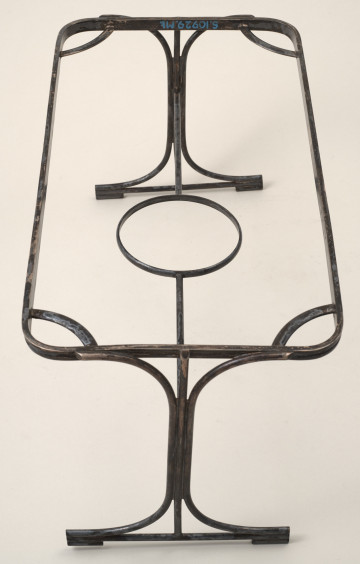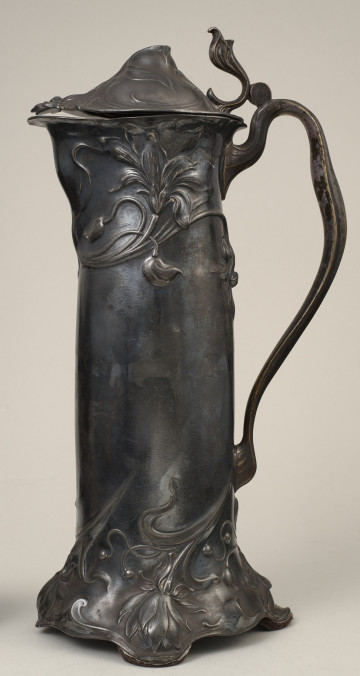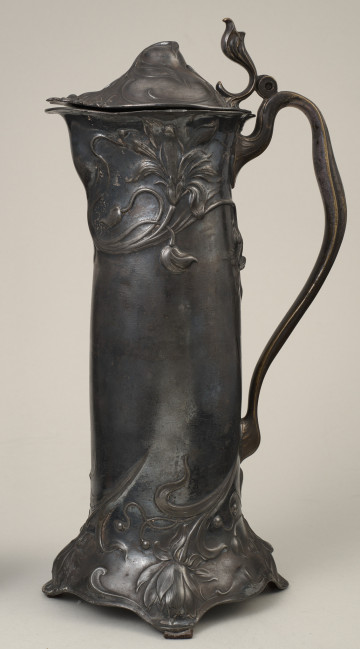
Frame
19th (?) century
Castle Museum in Łańcut
Part of the collection: Metale
Art nouveau jardiniere The discussed jardiniere was created in ca. 1900. It has a glass interior component, was made of silver-coated copper and is patinated. The jardiniere has an oval shape, is small, supported on four open work legs made out of twisting plant shoots that continue to become decorations around the lower edge of the dish. The body is wider at the bottom, narrowing towards the top, with two ears placed in the axis, made up of meandering ribbons that blend in with the body. The ears are aimed upwards and protrude above the top edge of the jardiniere. The entire body is enveloped by leaf-clad, twisting branches - ribbons – at the centre of the body there is a decoration made of three large flowers joined at the stems. The jardiniere is currently displayed with two pitchers, with which it forms a set (room 58 in the 2nd floor of the castle). The Polish designation of the style – secession – stems from the Latin word secessio – meaning „to separate”. Secession, or art nouveau, thrived in the plastic arts of Europe at the end of the 19th and the beginning of the 20th centuries. The main properties of the style were the introduction of twisting lines, rich ornamentation, mainly referring to flora and fauna. This characteristic meandering, smooth line was, according to most scholars, taken by artists from the world of nature. The new style found a place for itself in painting, sculpture, through architecture, furniture, all the way to jewellery, fashion or fabrics. After a period of domination in art, it was already considered a sign of bad taste in the 1920s-1930s. As time passed, thanks to statements by artists such as Salvador Dali, exhibitions and publication, interest arose again.
Author / creator
Dimensions
height: 20 cm, width: 52 cm
Object type
Metals
Technique
tin coating
Material
glass, tin
Creation time / dating
Creation / finding place
Owner
Castle Museum in Łańcut
Identification number
Location / status

19th (?) century
Castle Museum in Łańcut

20th century
Castle Museum in Łańcut

20th century
Castle Museum in Łańcut
DISCOVER this TOPIC
National Museum in Szczecin
DISCOVER this PATH
Educational path